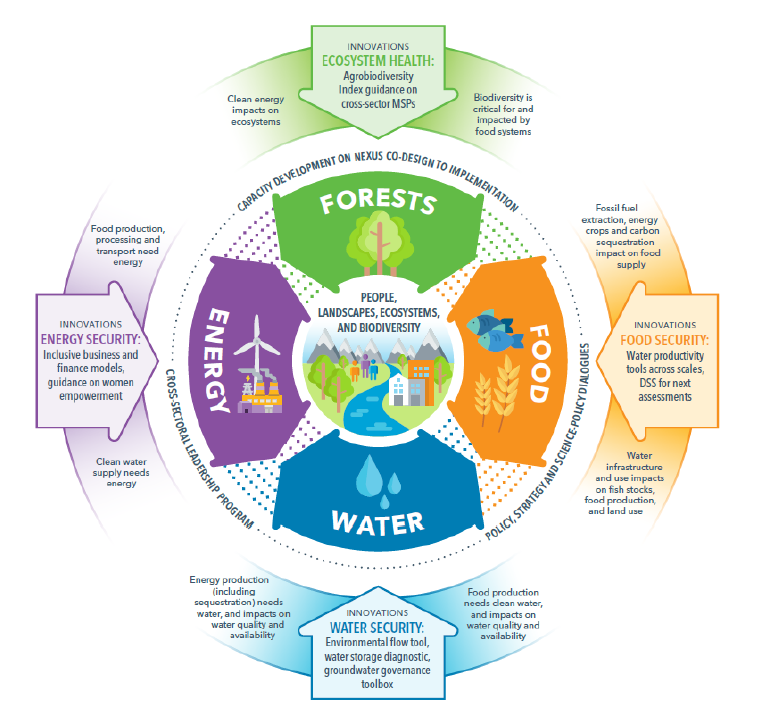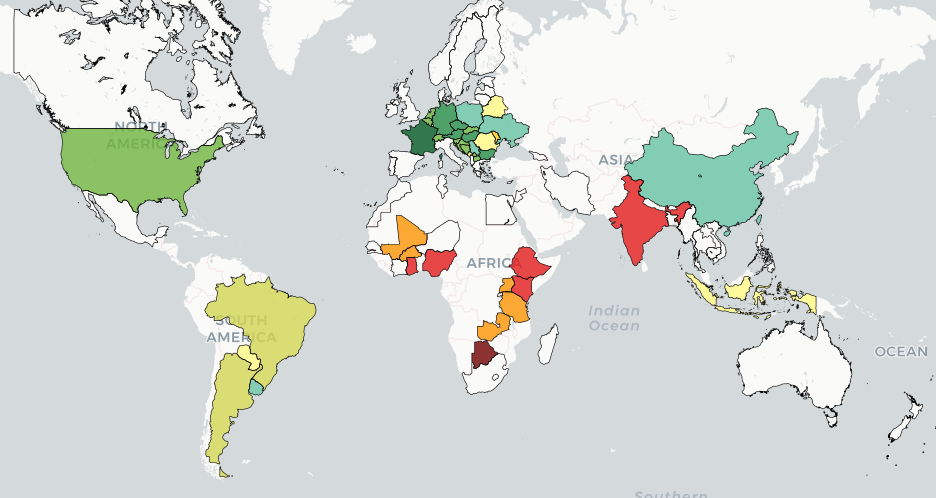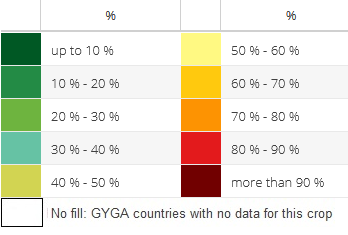Listen here on Spotify | Listen here on Apple Podcast
Episode released on June 27, 2024
Episode recorded on March 27, 2024
 Claudia Ringler is the Director of the Natural Resources and Resilience Unit at the International Food Policy Research Institute.
Claudia Ringler is the Director of the Natural Resources and Resilience Unit at the International Food Policy Research Institute.
Highlights | Transcript
The IFPRI (Intl. Food Policy Research Institute) provides research to support policies that sustainably reduce poverty and end hunger and malnutrition in developing countries. IFPRI was established in 1975 and is headquartered in Washington DC. Following its foundation by the Ford and Rockefeller foundations and IDRC (Canada) and ACIAR (AU) the international organization joined the CGIAR (Consultative Group of International Agriculture Research) that was initiated in the early-1970s to improve food security in the face of famines. Most of the centers are located in the global South. CGIAR has an annual budget of ~ $900 million with `~9000 employees and funding from philanthropy, development banks (e.g., World Bank), and governments.
CGIAR is well known for the Green Revolution and work by Norman Borlaug, focusing on breeding more high yielding varieties of staples, including rice, wheat, and maize (Intl. Rice Research Institute, CIMMYT [Centro Internacional de Mejoramiento de Maiz y Trigo]).
Examples of crop genetics and breeding include dwarfism, dwarf rice and wheat, less vulnerable to being destroyed during high winds and storms and using fewer natural resources, like water. Some breeding emphasizes increasing edible grain production relative to nonedible portions of crops. Reducing growing times was also important from ~ 5 – 6 months to ~ 3 months, decreasing crop vulnerability to adverse climate. (Kholova et al., J. Expt. Botany, 2021)
Norman Borlaug received the Nobel Peace Prize in 1970 for his contributions to the Green Revolution. The World Food Prize recognizes individuals who contribute to world food security and nutrition.
A recent visit to Uzbekistan, partner country in the CGIAR NEXUS Gains program (Fig. 1) that focuses on countries with water, energy, food and ecosystem health challenges reiterated the need for systems research. This region is widely known for the Aral Sea crisis because of a focus during the Soviet time on irrigated cotton production depleting the Aral Sea. The situation did not improve following the establishment of independent Central Asian countries, that each aimed to achieve national food, water and energy security. To support continued agricultural production, the government of Uzbekistan has recently proposed Government subsidies for advanced irrigation technologies (drip and sprinkler systems, but also laser land leveling) over 4.5 mha (45,000 km2, ~ 10% of Uzbekistan). This should also help address the Taliban government in Afghanistan construction of Qosh Tepa Canal that could divert ≤25% of upstream flow from the Amu Darya away from Uzbekistan.
Challenges include:
- Farmers cannot afford capital costs of advanced irrigation systems, even with the 40% subsidies
- Farmers who do not experience acute water scarcity have little interest to invest in complex systems
- Need to still focus on cotton to support foreign exchange
Food security and water use are strongly linked through irrigation, which accounts for 70% of global water withdrawal and ~90% of water consumption (Siebert et al., 2010).
Irrigation technology of limited value in improving water security.
Crop breeding and selection (CGIAR, National Agricultural Research Systems) can support water use efficiency
- Semi-dwarf and dwarf varieties (rice, wheat, and maize)
- Reduce growing window: short duration varieties
- Varieties that are drought tolerant, heat tolerant, submergence tolerant (flooding), etc.
- Less biomass, less water and energy required, less vulnerable to weather extremes and climate extremes, pests
- Improving plant water use efficiency and transpiration efficiency are also breeding goals that are more challenging to achieve
- CGIAR supports programs that help country assess different technologies, including Genetically Modified Organisms (GMOs). For example, CGIAR Program of Biosafety Systems to help countries establish legislation and regulation for GMOs.
- Increased interest in GMOs with ~ 900 million people globally facing severe food insecurity.
Increasing crop yield from ~ 0.5 to 4 tons/ha. Need holistic approach: (US achieves up to 12 tons maize/ha)
- Good seeds (higher yielding varieties, purchased annually)
- Irrigation
- Fertilizers and other agro-chemicals
Challenges: counterfeiting of seeds and fertilizers purchased through agrodealers.
- Global yield gap atlas: identified from modeled potential yield and actual yield (Fig. 2):
- Need to be careful to think that yield gap can be resolved with a single technology
- Gap may reflect labor shortages, market access or many other factors (Fig. 2).
Contrast between Asia and Sub-Saharan Africa (SSA) (Ringler, Ann. Rev. of Resour. Econ., 2021):
Asia:
- rice-based society, more water resources than SSA,
- long term Gov. investment in irrigation (traditionally large-scale surface water systems)
- shifting to groundwater-based irrigation since 1970s to 1980s (more control, widespread)
- more widespread electrification, mechanization
Sub-Saharan Africa:
- traditionally crops that need less water: roots, tubers, millet, sorghum,
- Gov not traditionally invested in agriculture,
- limited rural electrification (solar pumps can help with this issue) (Xie et al., EF, 2021)
World Bank has picked up on individual groundwater irrigation: Farmer Led Irrigation Development (FLID)
Can Sub-Saharan Africa Feed Itself? (Xie et al., 2018)
- Irrigation expansion at varying cost levels, reduce net import dependency of food
- Critical issue with large population growth and climate extremes
Water and food security linked to nutrition and health:
- Global health crisis: diabetes, obesity
- Emphasize public health cost of unhealthy foods, like sugar can reduce water use
- Food based dietary guidelines that consider environmental goals can support water conservation.
Water and food security linked to trade:
- In times of food inflation countries reduce exports, forcing water scarce countries to expand irrigation
- As an example, the war on Ukraine reduced wheat exports, in response Egypt planned to expand irrigated wheat production by 200,000 acres.
- Water security is linked with open trade regimes.
Water and food security linked to energy:
Water experts need to engage with the energy sector that uses large volumes of water for the production of biofuels, to help them identify less water-intensive solutions.






